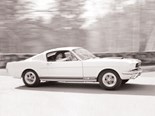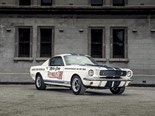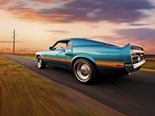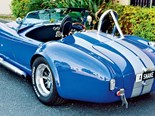Shelby Mustang 1965-70: Buyers' Guide
 Ford Mustang Shelby GT350 1965
Ford Mustang Shelby GT350 1965

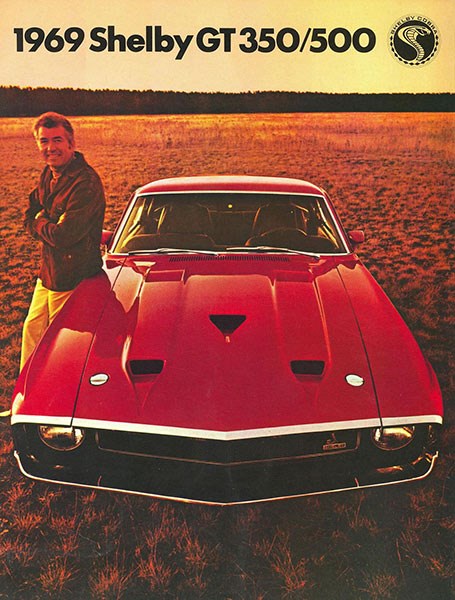 1969 Shelby Mustang GT
1969 Shelby Mustang GT

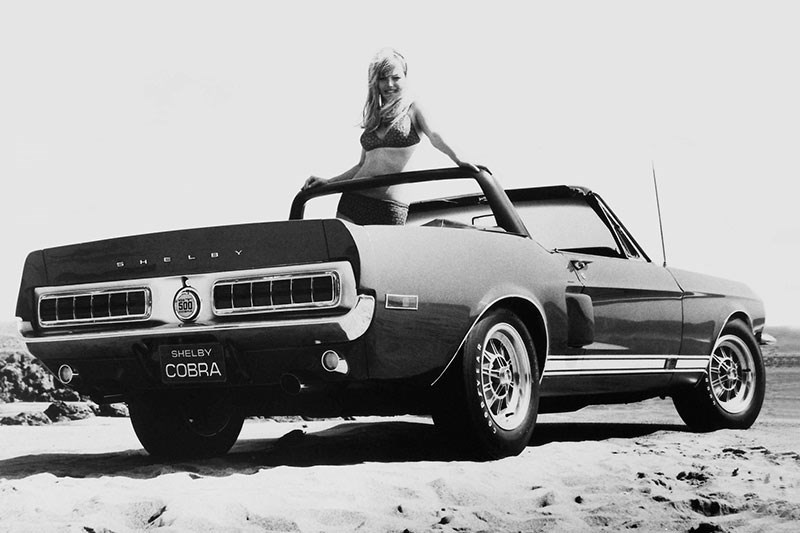 1968 Shelby GT500
1968 Shelby GT500

 1966 Shelby GT350
1966 Shelby GT350
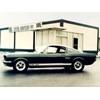
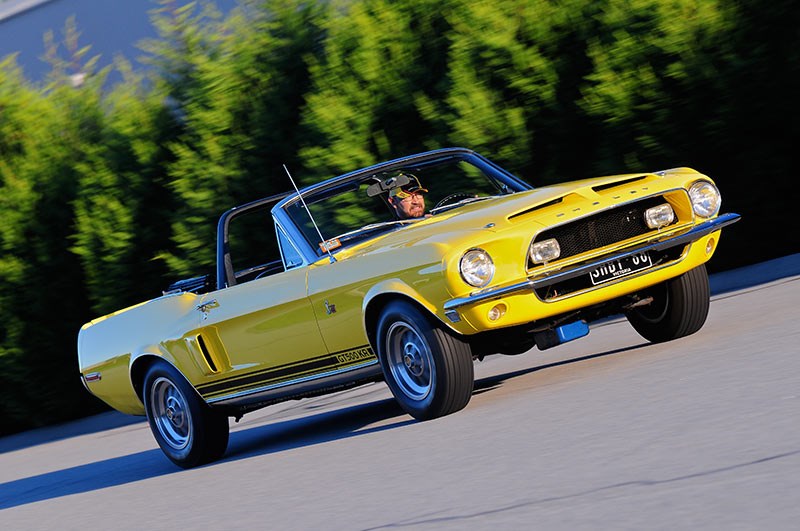 1968 Shelby GT500 KR Mustang
1968 Shelby GT500 KR Mustang

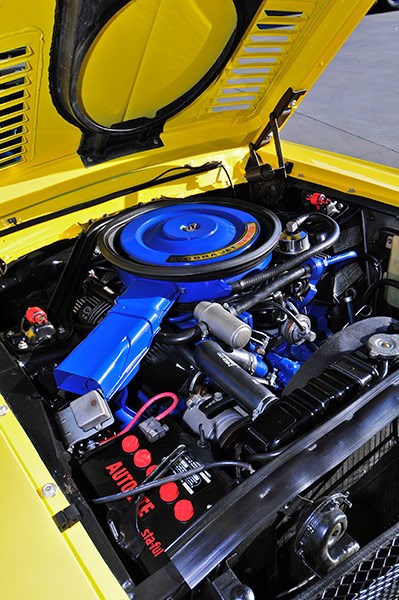 1968 Shelby GT500 KR Mustang
1968 Shelby GT500 KR Mustang

 1969 Shelby GT500
1969 Shelby GT500

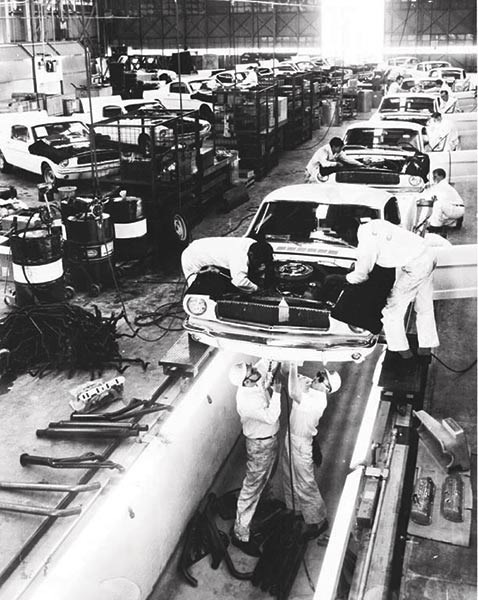 Shelby Mustang
Shelby Mustang


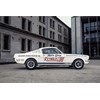
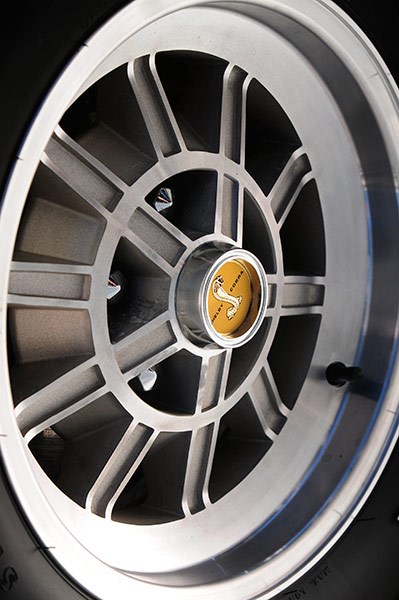

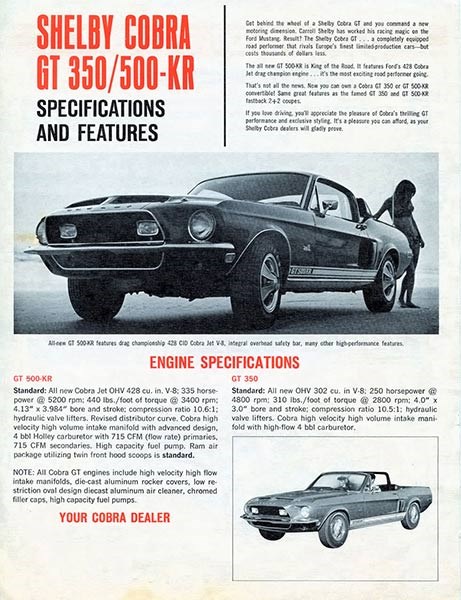

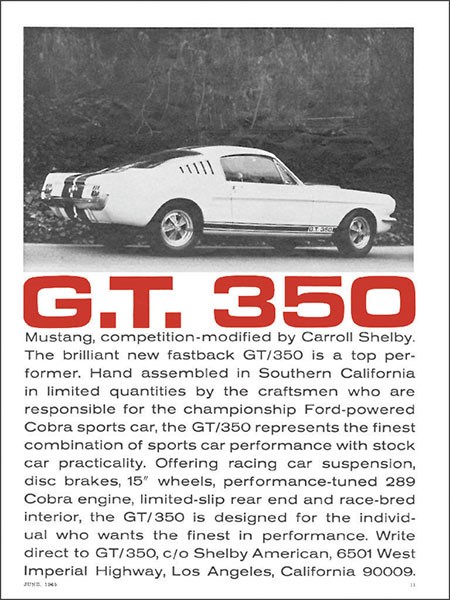


|
|
Ford Mustang Shelby GT350 1965
|

|
|
1969 Shelby Mustang GT
|

|
|
1968 Shelby GT500
|

|
|
1966 Shelby GT350
|

|
|
1968 Shelby GT500 KR Mustang
|

|
|
1968 Shelby GT500 KR Mustang
|

|
|
1969 Shelby GT500
|

|
|
Shelby Mustang
|

|

|

|

|
If you're in the market for a Shelby, there's a lot of important things you need to know if you're to avoid the traps. Here's most of it...
1965-70 Shelby Mustang
With more than a million sold during its first 18 months in the market, Ford’s Mustang was the most successful new model in the brand’s history.
Despite a sporty shape and unchallenged ‘street’ appeal, the Mustang wasn’t intended to be a performance car. To Ford’s shock, 65 percent of the early versions sold had V8 engines rather than the anticipated 3.3-litre six-cylinder. However, just 1.3 percent of Mustangs built for 1965 had the revered ‘K’ Code 4.7-litre and four-speed manual transmission.
About now you should see coming through the doors at Dearborn the tall frame of former Aston Martin works driver and Le Mans winner, Carroll Shelby. He was a familiar face in the halls of Ford’s executive building; buying engines for his AC-based Cobras and having a hand in developing the Le Mans-winning GT40.
Even before the new Mustang Fastback reached US showrooms, work was in progress to have Shelby’s workshop modify the car for road and competition use and sell them through a network of Ford dealers.
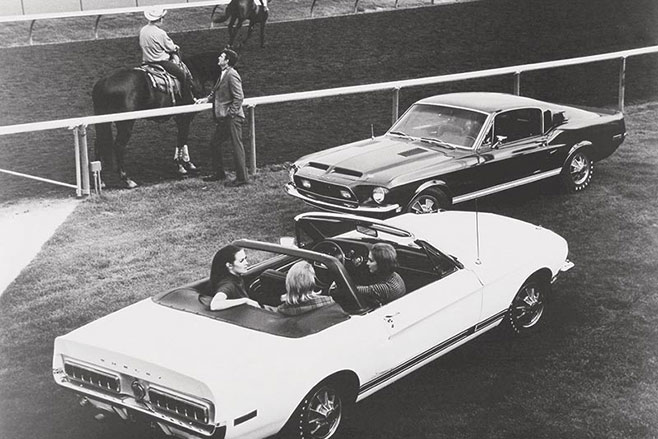
Road-going Shelby GT350 Mustangs were fitted with 4.7-litre engines, front-wheel disc brakes, a close-ratio four-speed gearbox with no automatic option, extra instruments, a fibreglass bonnet (on some), special wheels and significant suspension modifications. A Cobra ‘Hi-riser’ inlet manifold with Holley carburettor helped boost power from the K Code’s 201kW to a claimed 228kW.
To qualify for competition events as a `sports car’, the rear seat was deleted and any creature comforts that remained were tossed into Ol’ Shel’s workshop dumpster.
T350R – with the ‘R’ denoting Race – came with plastic windows, a fibreglass front bumper, 155-litre fuel tank, an integrated roll bar and harness seat belts. Production was capped at 100 cars but just 36 of the track-ready 350R were actually sold.
During 1966 the number of Mustangs flowing through Shelby’s Californian facility reached a record-setting 2380 cars. That total included 936 automatic 350H models and just 69 manuals supplied to the Hertz car rental chain. At $17 a day and 17 cents a mile, those aged over 25 and who qualified to join the `Hertz Sports Car Club’ could enjoy ‘owning’ a Shelby Mustang. Stories exist of ‘stick-shift’ cars coming back from weekend hires clearly showing signs of race-circuit adventures.
The 1967 Mustang restyle wasn’t especially radical so to more clearly define Shelby versions, Ford authorised an extended fibreglass nose, even more scoops plus a unique rear panel with single-piece lights and an integrated air-dam.

By this time, production had moved from California to a Ford factory in Michigan and Carroll Shelby now had virtually nothing to do with the design or modification of Mustangs that carried his name or the Cobra emblem.
A few cars were built using left-over ‘side-oiler’ 427 cubic inch race motors but most big-block GT500s would come with the 428 ‘Interceptor’ V8. During 1967 more than 2000 ‘big-block’ cars were built.
For 1968 the Shelby range again featured fastback and convertible versions of the GT350 and GT500 but the big-engined GT was replaced in January 1968 by the new KR `King of the Road’ 500.
The 7.0-litre ‘Cobra-Jet’ engine used by these cars produced a notional 249.5kW but that was quite likely an understatement. Legislators and insurance companies were by this time becoming nervous about the amount of affordable power being released onto North American roads.
A reshaped bonnet incorporated `Ram Air’ intakes and there were `GT500 KR’ decals for the rocker-mounted side stripes. Plain steel wheels were standard with distinctive 10-spoke alloys a popular option. The interior with its `swing away’ steering column, featured well-shaped seats, a wood-grain dash and console with matching oil pressure and amps gauges.
By 1969 Carroll Shelby’s involvement had ended. His racer’s edge was replaced by garish colours and performance-sapping budget cuts imposed by bean counters. Ford also had released the Mustang Mach 1, making Shelby versions with equivalent engines pretty much superfluous. Around 800 cars left unsold after 1969 were re-plated as 1970 models.
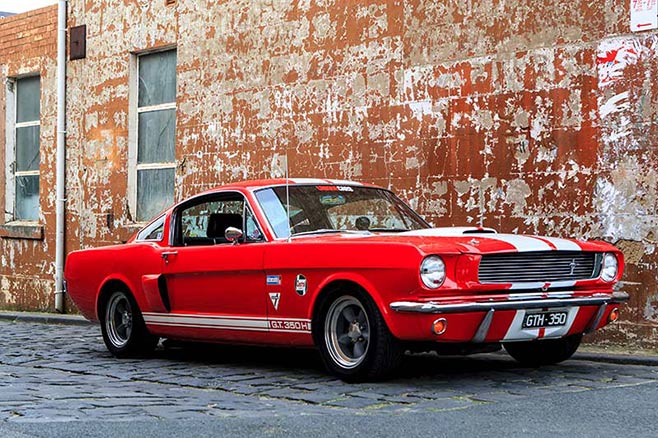
ON THE ROAD
Sprawled in the right-hand seat of ‘Uncle’ Phil Walker’s Shelby GT350H as we cruise through the Victorian countryside I was wallowing in more conferred kudos than one human could possibly sustain. Through the Fastback’s open window I am able to acknowledge the nods and grins of the less fortunate as they crawl past the low-slung and menacing Mustang, That’s until they realise I don’t have a steering wheel and the bloke having most of the fun is in the ‘passenger’ seat. Doesn’t matter.
Cadging that lift back to Melbourne with Phil some years ago from a motoring event in Shepparton was an experience now deeply etched in the long-term memory. So as well is the jack-hammer bellow emanating from an exhaust pipe that exited just below and behind my seat. However it was a great way to observe the influence this car exerted on an otherwise (fairly) rational owner.
During the car show we had already dealt with a passing parade of ‘experts’ and their "pretty good for a fake" assessments of the car, plus the odd knowledgeable enthusiast who begged a fiercely protective Phil for a closer look.
The controls are pretty much four-speed, 289-engined Mustang with not even the brakes power assisted. Steering at lower speeds demands effort due to the chunky American Racing mags and 225 section rubber, however Phil says the car steers and tracks as it should.

"A lot of people have their first Mustang experience in a RHD-converted car and don’t enjoy it," he explained "That’s because the geometry is all wrong and the converters shorten or lengthen things and turn others upside down so it doesn’t feel as it should."
"Even without considering the effect on the car’s value, a Shelby should always be kept left-hand drive."
Weighing around 1350kg against an XY Falcon GT’s 1527kg and with slightly more power the two-door Shelby can reasonably be expected to leave the local car in its wake. However it is the urgency with which the Shelby responds to the throttle that is most impressive.
Thriving on revs, the lightweight V8 doesn’t go close to generating peak torque until the needle slips past 4000rpm and maximum power still streets away at 6000rpm. By the time a Cleveland hits 5200 it’s pretty much had its chips and even a GTHO is limited to 6150rpm. The small-block Shelby deals happily with 7000rpm and if you aren’t willing to swap gears and nail the (very) loud pedal to release the beast don’t bother buying one.
Performance of the slightly heavier Hertz cars was down a little on the previous GT350 but 15.2 seconds for the 0-400 metre dash was still a good number. Although more than 200kg heavier, the GT500KR would match the 4.7-litre cars from 0-60mph (0-96km/h) and run the standing 400 metres half a second faster.
Phil’s 350H is one of the very few four-speed cars produced and comes with special Scat race seats that were fitted shortly after he acquired the car.
"The originals were basic Mustang and like sitting on a park bench," he revealed. These are soft yet they support you and make the car really enjoyable to drive." OK except maybe for the exhaust drone.

BUYING
The chances of picking up a genuine Shelby in Australia are slim, so overseas is where to look and not just to the USA market. These special cars attract collectors across the globe and the Shelby American Auto Club which records details of every known Shelby vehicle is the place to start your search for an authentic car.
"The SAAC won’t reveal a car’s identity to anyone who asks," Phil Walker warns. "You need to have all the data they require and only then will they authenticate."
An early GT350 described by its vendor as "one of the most original Shelby Mustangs in existence" was recently offered at US$350,000, Manual-transmission Hertz cars might go higher. However, it was quickly tossed into the ‘small change’ basket when another classified advertiser offered an ex-Carroll Shelby performance driver instruction car at $1.1 million.
The later they are the less expensive Shelby Mustangs typically become. The 1968-70 cars offered recently in the USA began at $75,000 for a decent-looking ‘69 coupe and finished at $200,000 for a 1968 GT350 described as being "unused since restoration 15 years ago".
Most 1967s occupy the middle ground and GT350s in outstanding condition reach and occasionally better US$250,000. That money will also unshackle the odd GT500KR Fastback from its owner. Considering the scarcity of Shelby convertibles, the money they generate is low ranked against Fastbacks and that’s a point in favour of the open-top cars.
"However," comes the voice of caution from Mr Walker "They won’t handle as well as a fixed-roof car and the scuttle shake on rough roads is pretty annoying."
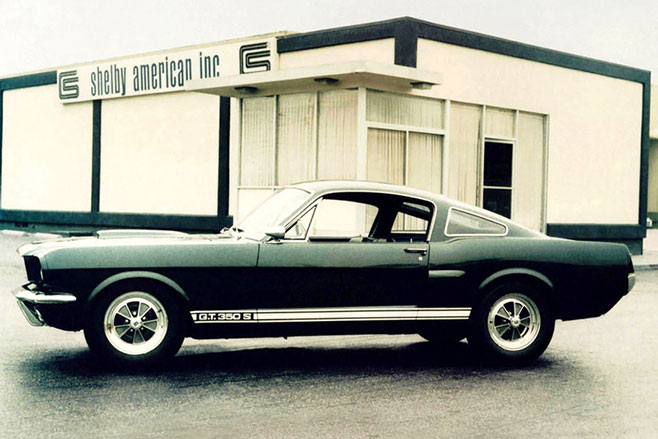
BUYER'S CHECKLIST
Body & Chassis
Here you are going to need the best of expert advice. Documented history and locating all of the identifying marks – including one that’s hidden from view are the cars to look for. Shelby signature additions like C-pillar windows, extractor vents and the fibreglass bonnet fitted to some cars are difficult to replicate. Rust, should it happen to be present, is most likely to show in the rear quarters, boot and cabin floors. Make sure that the ‘export brace’ that supports the strut towers is still fitted.
Engine & Transmission
Nothing too scary here unless special Shelby components are missing. All early GT350s used the high-compression ‘K’ code 289 cubic-inch (4.7-litre) V8 with a larger sump than was fitted to stock engines and made from cast aluminium to match the rocker covers. The shift-action of the four-speed T-10 transmission is notchy by nature but if it crunches or baulks when down-changing a rebuild is needed. Clutch shudder can be due to overheating of the clutch disc but also because engine or transmission mounts are worn or cracked. Older, noisy limited-slip differentials can be upgraded with modern Platinum Track innards for around $1000 plus labour.
Suspension & Brakes
Springs, steering and brakes are simple and available so there’s no excuse to own a Shelby that makes its own way in the world. Shorter, stiffer springs and modified control arms gave a lower stance, Koni shock absorbers combined decent ride and taut handling. Girling front discs were shared by some Jaguar models and the wider rear drums were lifted from the much heavier Ford Galaxie. Cars without a brake booster demand big pedal pressures but can be converted at minimal cost.
Interior & Electrics
Black vinyl and lots of it dominate a Shelby Mustang cabin. The stock seats are basic Mustang items with lap-only ‘Racer Brown’ seat belts. Stock trim is easy to find, some special parts like the tachometer mounting ‘pod’ introduced for 1967 more difficult. As with all convertibles, activate the power top several times to be sure nothing in the mechanism is bent or binding.
SPECIFICATIONS
Shelby Mustang(1965-70)
Number built: 13,912 (including special-build cars)
Body: integrated body/chassis two-door-coupe or convertible
Engine: 4737cc or 7016cc V8, ohv, single downdraft carburettor
Power & Torque: 228kW @ 6000rpm, 446Nm @ 4200rpm (GT350)
Performance: 0-100km/h: 6.7 seconds, 0-400 metres 15.2 seconds (GT350-H manual)
Transmission: 4-speed manual, 3-speed automatic
Suspension: Independent with locating arms, coil springs, telescopic shock absorbers, anti-roll bar (f); live axle with semi-elliptic springs, telescopic shock absorbers (r)
Brakes: Disc front/drum rear
Tyres: E70-15
2015 Price range: $55,000-450,000
Contact: Shelby American Automobile Club www.saac.com
Unique Cars magazine Value Guides
Sell your car for free right here
Get your monthly fix of news, reviews and stories on the greatest cars and minds in the automotive world.
Subscribe

.jpg)









